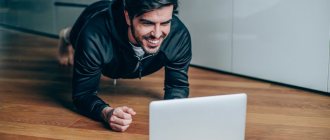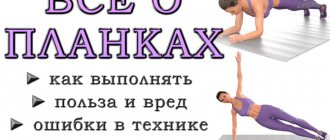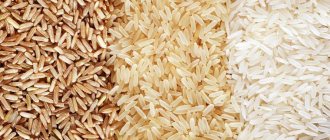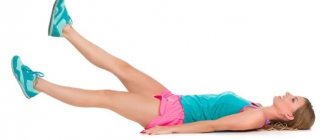If you want to pump up your abs, strengthen your core muscles, tighten your stomach, make it flat, and strengthen your shoulder and gluteal muscles, the plank will help you.
Is it hard to believe that doing one exercise every day can improve your strength, figure, mood and more? But it's true! This pose has many positive effects for your body. While it may not be the easiest exercise, doing it regularly will provide you with lifelong benefits.
In yoga, plank pose or Phalakasana is a pose for developing strength, as it tightens all the large muscles of the torso, as well as the shoulders, strengthens the neck, back muscles, buttocks and quadriceps and abdominals. The plank is also known as an isometric stance. It contracts the muscles, forcing them to hold one given position. You stand in a plank position and your body works.
This is the most popular exercise in all fitness programs, and it does not require machines, equipment, free weights or a gym. All you need is your body, desire and perseverance, and you can do it even at home!
The plank will help speed up metabolism, improve blood circulation, and the exercise is suitable for everyone: beginners and advanced, both men and women. You will find this exercise in yoga, Pilates, stretching, and bodybuilding.
A seemingly simple static exercise only seems so. After standing in the plank for one minute, you will realize that time does not fly so quickly. By the way, the world record is 8 hours, 1 minute and 1 second for men. Women's record - 3 hours 31 minutes. So, you have something to strive for. Now let's talk about everything in order.
Beneficial properties of planks for health and weight loss
Exercise not only tightens muscles, but also has preventive and therapeutic effects against certain diseases. The effect is guaranteed if the exercise is performed systematically. The bar is capable of:
- prevent and eliminate the first manifestations of osteochondrosis of the cervical and lumbar spine;
- significantly improve posture;
- relieve pain in the spine;
- stimulate blood circulation;
- speed up metabolism;
- burn calories.
Please note that the last two points indicate that this exercise promotes weight loss.
Benefits and harms
All physical exercises are beneficial for the human body, although they require time, effort and desire.
The plank does not require additional sports equipment or special space. The training can be done anywhere, and at the initial stage you will have to devote no more than 30 seconds to it.
Here are the main advantages of the rack:
- Strengthening muscles. Many people complain of decreased muscle tone due to a sedentary lifestyle. The plank engages most muscle groups and with regular exercise they become stronger.
- Posture. More and more people spend a lot of time at the computer, which negatively affects the spine. Regular standing helps improve posture, well-being and normalize blood flow to the brain.
- Hands. The area of the arms with sagging skin is considered one of the most difficult because it is difficult to correct. The plank will allow you to pump up your upper limbs, getting rid of fat deposits in this area.
- Legs and buttocks. All representatives of the fair half of humanity dream of a beautiful and toned butt. Only some are lucky with good genetics, the rest have to work hard. In a set of exercises, the plank will help you achieve the shape of Brazilian beauties.
- Losing weight. The stand will not be able to remove several tens of kilograms of excess weight, but after 2 weeks you can reduce fat deposits in problem areas and improve your figure.
- Strength of will. Doing the plank daily increases a person’s willpower, which has a positive effect on everyday life.
In addition to its benefits, the stand can cause harm to the body if contraindications to training are ignored. Therefore, before starting classes, it is recommended to consult a doctor to exclude side effects in the future.
What muscles work
When performing a standard (classical) plank, the following muscles work:
- Rectus and transverse abdominis muscles;
- Biceps, triceps, deltoid;
- Paravertebral muscles of the lumbar region;
- Biceps, quadriceps femoris and calves;
- Buttock muscles;
- Muscles of the back and chest.
What does the bar give?
With regular exercise, metabolic processes in the body improve, the rectus, oblique and transverse muscles develop, the buttocks are rounded and pumped up. Exercise reduces the risk of spinal and back injuries. The plank will allow you to maintain your balance longer and is the best way to combat stress and bad mood.
Will planks help you lose weight?
Many women are interested in the question of whether it is possible to lose extra pounds with a simple exercise. The plank has the ability to engage almost all the muscles of the human body, thus tightening and toning the skin.
To perform it, there is no need to purchase special equipment, and it is easy to find a place for training.
Such physical activity will help you lose weight if you follow a diet, the correct technique and additional cardio exercises.
Does planking help you lose belly fat?
The rack is an ideal abdominal exercise that targets the rectus abdominis, transverse abs, and internal and anterior obliques. With proper and regular training, the muscles are toned and the volume of deposits on the abdomen is reduced.
The exercise makes your waist slim and your posture beautiful. The daily plank stretches your neck, strengthens your back, makes your shoulder line more expressive, and removes belly fat.
How to do it correctly?
To achieve a positive effect from training, you should pay attention to the basic techniques for performing a stance:
- Spine. From head to heel, the body should be straightened in a continuous straight line.
- Hands. The limbs serve only as a support and are not tensed, otherwise there is a risk of excessive stress on the shoulder joints.
- Stomach. The abdominal muscles are tensed as much as possible, the lower back does not bend and should be flat.
How much to do?
To begin with, it is enough to stand in the plank once, but if your physical fitness allows, the number of approaches per day can be increased to 2-3 times. The main thing is that excessive stress does not affect your health.
How often should I do it?
Many people are interested in how many times a static exercise is done. This depends on the physical fitness of the person, because some will be able to stand in the plank for 3 minutes, while others can withstand 30 seconds.
The frequency of performing the stance depends on the goal you want to achieve. To strengthen and tighten muscles, 2-3 minutes daily is enough.
To get rid of excess weight, the training time is doubled. It helps prepare your torso for more challenging weight loss exercises.
Beneficial features
- Strengthens the core muscles
When you're trying to develop core strength, this pose is the most beneficial because it targets all the abdominal muscle groups... and you thought abs were just a six-pack? The plank loads not only the cubes, but also the stabilizing muscles, as well as the lateral abdominal muscles, which are responsible for the position of the hips and the back muscles.
- Muscles become more defined
The plank also loads the muscles of the shoulders, chest, legs and back. They will grow too. The functionality of this pose, combined with isometric tension, helps muscles throughout the body dry out and become more defined.
- Metabolism accelerates
Muscle strength and mass, which increase with proper exercise, have another great property, in addition to increased strength and a good figure - accelerated metabolism! When you increase muscle mass, you speed up your resting metabolism, which allows you to burn more calories.
- Prevents back pain
As your abdominal muscles become stronger, your body has to rely less on using your back muscles to maintain your posture. Instead of the back muscles, the torso muscles are now used, which are used for all exercises and work, which reduces the likelihood of back pain.
- Your posture improves
Improving your posture is most often achieved by improving the health and strength of your back and core muscles. When you assume plank pose, your back, neck, shoulder muscles, and abdominal muscles work to organically hold your body in position.
- Improved coordination
Holding the pose isometrically stimulates improved coordination and overall balance. If you learn how to perform a plank technically, you will also be able to maintain an upright posture more efficiently and stably.
- Improves joint and bone health
The plank allows you to exercise with heavy weights while reducing the discomfort and negative effects associated with exercises such as running and jumping.
When you stand in this pose, new living bone tissue is created, which helps create healthier, stronger bones. Physical activity performed during exercise also improves blood circulation in the joints, making them more mobile. Friction is reduced.
- Improves mood and reduces stress
Performing a plank, like any other exercise, helps release the neurochemically active compound endorphin. Endorphin improves mood and creates a feeling of joy, and also helps relieve stress. This pose can also relieve tension as your body is given the opportunity to stretch as you do this exercise.
Judging by the number of advantages from its implementation, it is not difficult to understand why it is so popular.
Whether you're just starting out or just adding a minute to the time you spend in this pose, remember that quality is always more important than quantity or duration. Once your pose starts to fall apart, you should stop, take a break, and try again the next set or day.
general description
The plank is a static exercise, that is, it does not require any movement. The main goal when performing the exercise is to keep the entire body in a straight position for the maximum number of minutes. At the same time, the abdominal muscles, the back of the thigh and the core muscles are tensed. The exercise is widely used in various health practices, yoga, fitness and Pilates.
Professional athletes recommend including the plank in their daily standard workouts.
You can do the plank at any time; there are no restrictions for this. However, you should not resort to exercise immediately after waking up, so as not to put the body into a state of stress.
The plank has many variations. Beginning athletes should pay attention to the basic version of the exercise: this will prevent possible body injuries.
The plank burns 5 calories in 1 minute.
Muscle work
During the plank, the abdominal and back muscles actively work, as they help keep the body in a fixed position. In addition to them, other muscle groups are included in the work: chest, hips, buttocks and shoulders.
Load distribution when performing the exercise:
| Muscles | Role performed |
| Press | Ensuring a level body position without sagging under the influence of its own weight |
| Backs | Supports the body in a straight position. Ability to align the angle between the shoulders and body |
| Pectoral and deltoid | The ability to be held in your arms without sagging your chest down |
| Gluteus maximus, calves, quadriceps | Ensuring an even position of the legs and pelvis |
Benefit
By doing the plank every day, you can see pleasant results within a month. Benefits of the plank:
| Benefit | Description |
| Balance | By strengthening the abdominal muscles, it will become much easier to engage in any sport. |
| Acceleration of metabolism | The plank burns more calories than other standard abdominal exercises. Moreover, they burn faster, and the result lasts much longer. |
| Posture correction | The plank strengthens the core muscles, which improves the condition of the shoulders, neck, back and lower back. Trained muscles will keep the body in an upright position, preventing a person from slouching and hunching over. |
| Increased flexibility | The exercise stretches the muscles and ligaments attached to the shoulders, collarbones, hips, shoulder blades, and toes. The side plank will help you work your obliques. |
| No back pain | Exercise strengthens the muscles of the back and lower back. Thanks to this, pain from heavy bags, sedentary work or other physical activities will soon go away |
| Improved mood | The exercise has a positive effect on the emotional state and nervous system: after a month of doing it, a person becomes more balanced and calm. This occurs due to the slow stretching of “clogged” muscles, which affect the appearance of tension in the body, and, accordingly, stress |
| Strengthening your core muscles | Thanks to the load received from the bar, the core muscles quickly become toned, which has a beneficial effect on the condition of the internal organs. In a short time you can get the gluteal muscles, as well as the rectus, oblique and transverse abdominal muscles in order. |
| Strengthening leg muscles | Exercise strengthens the leg muscles, and also makes them slimmer and more toned. The plank also has a beneficial effect on the gluteal muscles. After several months of training, you can notice a decrease in cellulite due to improved blood microcirculation in this area |
The plank cannot cause harm to the body if performed correctly. However, this exercise has contraindications, neglecting which can significantly worsen your health.
Contraindications
Like any exercise, the plank has a number of restrictions under which it is absolutely forbidden to perform it:
- diseases of the cardiovascular system;
- high blood pressure;
- spinal injuries;
- problems in intervertebral discs and hernia;
- ligament and tendon injuries;
- period of exacerbation of chronic diseases;
- postoperative period, bed rest;
- carpal tunnel syndrome;
- recent caesarean section (up to six months).
During pregnancy, there are no restrictions on performing the plank, but this only applies to professional athletes. Untrained women should not start doing the exercise during this period. In addition, you must obtain a doctor's permission.
Advantages and disadvantages
The advantages of this exercise include the following:
- does not require additional equipment and a lot of time;
- can be performed at home;
- gives quick results;
- can be performed as the only daily exercise.
Minuses:
- requires a lot of effort;
- not suitable for muscle building;
- has some contraindications;
- If done incorrectly, it can cause harm to the body.
Basic mistakes of newbies
Although the plank is a simple exercise, it requires careful adherence to execution requirements. Mistakes can cause short-term pain in the back and joints, and also lead to unpleasant consequences in the form of serious health problems.
Main errors during execution:
| Error | Description |
| Indirect body position | Sagging of the body gives temporary ease when performing the exercise, but in the future it can cause aching pain in the back and lower back |
| Executing complex options | Unprepared muscles will react negatively to complex plank variations. Such inconsistency can lead to the occurrence of kyphosis, scoliosis and hyperlordosis. |
| Ignoring the pain | Pain while performing the plank may indicate incorrect execution or the presence of contraindications. In this case, you should immediately stop doing the exercise. However, it is necessary to distinguish signal pain from simple pain in untrained muscles |
| Looking down or up | When performing the plank, you should look straight ahead. Looking down makes the exercise much easier, but leads to neck problems. Improper execution of the plank can cause the development of osteochondrosis |
| Shaky knees | The legs must be clearly secured. “Walking” or sagging legs can lead to problems with knees and joints |
| Holding your breath | There is no point in holding your breath: it will not make the exercise easier. You need to try to breathe evenly, without sharp inhalations and exhalations. Thanks to measured breathing, more oxygen will enter the body’s cells, which means the benefits of the plank will be much more pronounced. |
Correct technique
The algorithm for performing the movement is very simple, but nevertheless, be attentive to the details, learn how to stand in the plank correctly, competent technique is the key to success.
- Lie on your stomach. Place your elbows on the floor at shoulder level. Place your forearms on the floor. Bent arms should form an angle of 90 degrees. Straighten your legs and now lean on your toes and forearms. Feet can be placed together or spread hip-width apart. Make sure your elbows are under your shoulders.
- Tighten and straighten your entire body. Your body should be in one straight line from head to toe.
- Do not bend your spine, do not lift your pelvis;
- Tighten your abs;
- Breathing is smooth and calm.
There are many variations of this exercise. But if you master the technique of performing the classic plank, then there will be no problems with other options.
Who shouldn't do planks?
This type of physical exercise cannot be performed by everyone; it has a number of contraindications.
Here are the main ones:
- Presence of protrusions.
- Spinal injuries.
- Increased body temperature.
- Hypertension.
- Herniation of the spine.
- Menstruation.
- Exacerbation of chronic ailments.
- Pinched sciatic nerve.
- Neuropathy of the ulnar and radial nerve.
- Pregnancy with complications.
- Joint problems.
- Glaucoma.
- Phlebeurysm.
After a traditional birth or cesarean section, a woman can start exercising 3 months after the birth of her baby.
The plank is a universal workout that is suitable for both athletes and beginners. The rack is an effective method of shaping the abs, developing endurance, strengthening the entire body and losing weight.
It is necessary to follow all the rules for performing the exercise and consult a doctor who will rule out any contraindications.
Common mistakes
- Raising the pelvis above head level. The very position of the bar is violated. What does this lead to? This is the most common mistake. People often feel tempted to lift their hips up because it will allow them to hold the pose longer. The problem is that when you lift your hips up, most of the load falls on your shoulders and the pose loses its meaning. This mistake leads to the development of pain in the shoulders and back. Keep your hips in a straight line between your heels and shoulders.
- Deflection in the cervical region. The neck muscles are overloaded. When performing, the neck should be kept in a neutral position - the head should neither fall down nor rise higher. Imagine that both your head and neck are part of a straight line created by the rest of your body. When your neck is not in this line and your head is down or up, you are more likely to notice pain in your upper back or neck.
- Moving your elbows to the side, connecting your fingers and lowering your head below the desired level. As a result, the shoulders are less involved, causing a rush of blood to the head. Holding your hands together will reduce the effectiveness of the pose. When your hands hold each other, your abdominal muscles work less. Always keep your arms apart, extending them in a straight line from your elbows, keeping your hands flat on the floor.
- Bend in the lower back. If you continue to stand in a pose with such an error, you can get problems with your lower back. When you arch your back, the weight of your body stops loading the muscles; instead, the load is carried by the vertebrae and the connections between them. This mistake leads to pain in the lower back. Correct the error by slightly rotating your pelvis. This will make your back straight. It is also helpful to tighten your glutes.
- Hips too low. If your hips drop too low, your entire body weight will rest on your lower vertebrae, even though your core muscles should be doing the work. It seems that it is easier to lean on your back than on your muscles, but then the exercise loses its meaning.
- A rounded back is a sign that your shoulders are hunched. People sometimes make this mistake to compensate for a weak core. The mistake allows people with a weak torso to hold the pose longer, due to excessive tension in the muscles of the back, neck and shoulders. To correct this error, move your shoulders down, away from your ears. The trapezius and mid-back muscles (upper back muscles) should be tightened to prevent the back from rounding.
Errors
If you perform the plank correctly, you can achieve the desired effect and not harm your health.
There are five main mistakes that beginners make:
- Arching your back. If you don’t strain your abdominal muscles, but think only about the load on your arms, then they begin to get tired quickly. When it gets hard, a person involuntarily arches his back, which negatively affects the spine, because additional stress is created on it. And training will not be beneficial for the muscles of the back, abs and arms.
- Sight. During the exercise, you need to look down. If an athlete begins to throw his head up or turn it to the sides, the load on the neck increases. It is necessary to control your gaze so that your neck is at the same level as the rest of your body.
- Dropping the hips. When you feel tired in your arms and abs, your hips involuntarily begin to drop down. As a result, the entire load falls on the lower part of the body. To avoid this, it is recommended to raise your buttocks slightly, and to better maintain your balance, spread your legs wider.
- Palm position. The palms should be placed strictly under the shoulders; this rule also applies to the elbows if the bar is done on the elbows.
- Knee bending. This mistake is common for beginners who have not yet learned to control their body. During the exercise, you must not forget about your knees.
Tips for Beginners
Perform the exercise on a yoga mat or towel so that the hard floor does not cause additional discomfort to your elbows. Before exercise, warm up by stretching or doing some simple exercises for three minutes. The first days, stand in the plank for only 20 seconds. This is quite enough for a beginner. To make the exercise easier, place your feet hip-width apart.
If you don’t feel entirely confident in this position, then do it from your knees.
After a few days, when the muscles are stronger, make the knee plank more difficult by straightening one leg and holding it suspended. Stand like this for 30 seconds, then change legs. After finishing the exercise, we recommend taking balasana - child's pose. This will relieve tension and relax your core muscles.
Benefits of planks for men
Is the plank useful for those who perform strength training? It would seem that such a simple exercise gives? Also, does the bar affect weight loss, and how? All these questions will be answered positively below.
- The effectiveness of the classic version, first of all, lies in strengthening the stabilizer muscles, which prepare the body for heavy basic exercises. The technique works not only external, but also deep muscles that are not developed with the help of dynamic strength exercises; the abs and lower back are strengthened and support the spine in the correct position when using a large working weight.
- There are various variations of the exercise that help both strengthen muscles and burn fat. The plank can also be performed dynamically, which allows you to spend more calories and include ligaments and muscle fibers in the training that cannot be worked with a simple base.
- By involving slow-twitch fibers that rest during dynamic exercises, you can significantly increase muscle strength, since it is comprehensive development that allows you to progress and meet standards with better quality.
- The exercise is suitable for both beginners and experienced athletes. The main task is to choose the appropriate option for the load.
- You can perform any of the plank options both at home and in the gym. The techniques presented below do not require additional equipment.
Is it possible to do a plank during your period?
Definitely yes. During menstruation, you can do many things, especially sports. Some young ladies, perhaps, use critical days as an excuse not to study, but to lie on the sofa, leaf through glossy books, and indulge in a couple of cakes. But you won't do this. If during this period you have a catastrophic loss of strength and mood, then it is better to slow down with training. And if critical days are not so critical for you, then stay on track for your health.
Plank for men
Standing is a simple exercise that requires little time and space. But training brings many benefits.
It is indispensable for men during physical activity, performing the following functions:
- increases the body's endurance;
- helps burn fat during the drying process;
- tightens the stomach;
- forms the press;
- maintains physical fitness in combination with other exercises.
How long do you need to stand in the bar for weight loss?
Not sure how long to hold plank pose? Hold until you notice that you are having difficulty maintaining the correct technique, or hold it until you feel your muscles begin to ache and your body begins to tremble - then hold it for another 5-10 seconds.
If you got into this pose for the first time and found that you could easily stand for 1 minute, congratulations. You are in satisfactory physical shape. But if you are completely new to the sport, then you can start with 10 seconds, doing five repetitions a day. After some time, when the muscles get stronger, do 4 rounds of 30 seconds, each time increasing the duration of the exercise by 1 second.
Remember that the main thing is technique. It’s better to stand for 20 seconds with perfect technique than to stand for 40 with your lower back arched.
Do the plank every day, but leaving one day a week for rest.
But you need to understand that everything depends on the capabilities of your body. Once you start training and evaluate your strength, you will be able to choose the best option and time, and you will stand in this pose with health benefits and pleasure.
It’s up to you to decide when it’s best to do planks for weight loss. After all, what’s good about it is that it doesn’t require anything except your body and a little space. The exercise can be performed in the morning, in the evening, and during the day, but you should not do it immediately after meals and immediately before bed.
How to do the exercise correctly?
If the exercise is performed incorrectly, it is impossible to pump up the abs and tone the body. The body position in the plank should look like this:
Wherein:
- Feet should be placed together. This will increase the load on the abdominal muscles.
- Legs must be kept tense and straight. Otherwise, the load on the abdominal muscles will be significantly reduced.
- The buttocks should be tense throughout.
- The lower back should not be arched or rounded. The lumbar region should remain flat.
- The stomach should be pulled in and try to be pulled towards the ribs. Do not hold your breath.
- The elbows should be placed clearly under the shoulder joints: this will relieve your arms from unnecessary stress.
If during the exercise there is discomfort or severe nagging pain in the lower back, it means that the plank is being performed incorrectly.
You can check the correctness of execution by photographing yourself from the side. Thanks to photography, you can notice the main mistakes and correct them in the future. If possible, perform the plank the first time in front of a mirror.
Features of performance for men and women
Men's and women's straps are slightly different. This happens because the male body is naturally stronger and more resilient than the female body.
When resorting to such an exercise, men and women, as a rule, expect different results: while the presence of clearly defined relief and muscles is important for the stronger sex, girls strive to quickly tone their body, pump up their gluteal muscles, and also get rid of a sagging belly.
This is why plank times are different for women and men:
- Women need to start with 20-25 seconds. and perform 3 approaches. This is enough for the first week of training. In the second week, the time can be increased by 10–15 seconds. and add another approach. You need to continue adding time in this way until it reaches two minutes.
- Men can start doing planks from 45 seconds. 4 approaches each. Every week you should add 15 seconds. and one approach. If a young person has previously been involved in sports, it is recommended to do the plank in the morning and evening.
- Girls who have previously visited the gym can do the plank twice a day for 30–35 seconds. in 3–4 trips. The stand time can be increased by 10 seconds every week.
These are general recommendations. You should pay attention to your physical condition, as well as the degree of muscle training.
Men can resort to this type of exercise only to give general muscle tone or to warm them up. The plank is a static, not a dynamic exercise. It is called that because it does not require a large number of movements, so there can be no talk of any gain in muscle mass.
The plank helps strengthen ligaments and also stretches muscles, preparing them for a full workout.
How to hold a plank longer
Regular training will allow you to stand in the plank longer and more technically. But other points are also important:
- Comfortable shoes and clothes. Make yourself comfortable in this sense. You should not be distracted by a top strap cutting your shoulder or a slipping sneaker.
- A fairly soft mat or towel will allow you to stay in the pose longer. After all, the pain felt in your elbow from the hard floor can make you give up prematurely.
- Ventilated room. You need oxygen.
- Turn on the music.
- Give yourself some peace, turn off your phone, and make sure that you are not inadvertently distracted.
- Mentally motivate yourself. Words: “My body works, my muscles become stronger, I become more beautiful!” work great.
- Warm up before exercise.
- Use a stopwatch. When you see the seconds ticking by, it's motivating.
What is the bar for?
The main purpose of the plank is to strengthen the core muscles. The core is a group of muscles in the abdomen, back, buttocks, and thighs that provide support for our limbs. Our arms and legs are only as strong as our core can provide them with. If there were no support for the core, our spine would gradually collapse.
The core is not six-pack abs. It has little to do with thinness or the visual image of our body in general. But it is he who makes the body strong.
The plank helps engage your core and pump up your brain. This is an exercise for the nervous system. During the plank, we train the brain's ability to control muscles. We learn to control body segments and create stability during loads on the arms and legs.
The plank cannot be the main exercise. But this is excellent preparation for running, jumping, and push-ups. The position of correct posture that we maintain in the plank can then be transferred to all movements in sports and life.
Popular planking options: technique, nuances and differences
Classical
You should rest on your toes and forearms. The arms are bent at the elbows at an angle of 90 degrees, the forearms are parallel to each other. Your body is a straight line from head to toe. Tighten your buttocks and leg muscles. Do not lower your pelvis, do not raise or lower your head. Breathing is even.
Full or straight arms
Straighten your arms and lift your hips, keeping your hands on the floor. This plank may even seem easier for some people who have a more developed upper body. This variation will make your shoulders more stable than the classic one. The fingers should be spread wide and the middle finger should point straight ahead. Rotate the inside of your elbow forward to engage your biceps.
Lateral
Lie on your right side with your feet on top of each other. Place your lower right elbow directly under your right shoulder and lift your hip off the floor to create a straight line. You should feel tension in your waist area. Extend your left arm toward the ceiling or place it on your left thigh. Hold this pose for a few seconds, then repeat the same on the other, left side of the body. If you feel like one side of your body is stronger than the other, continue doing the same number of reps on each side to make them equally strong.
Lateral with leg lift
Once you have been able to hold a side plank for one minute, you can try this variation. Get into the side plank position and, holding the position, lift your upper leg a few centimeters from the floor, then, tensing your muscles and controlling the movement of your leg, lower it back. Perform 10 repetitions, then repeat on the other side.
Lateral with hips lowered
Standing in a side plank, lower your pelvis down without touching the floor, then return to the starting position. What gives? Increased load on obliques.
Full with leg lifts
Start in a full plank position, pressing your hands into the floor and keeping your hips and abdominal muscles tight. Lift one leg up, squeezing your buttocks. Keep your leg in the air for a few seconds, then move to the other leg and do the same. It is not necessary to raise your legs very high, it is important to stretch them away from you. Do 10 repetitions with each leg.
Reverse
Sit on the floor. Place your hands on the floor, moving them slightly back. Lift your pelvis up. The palms should be strictly under the shoulders. Dough on the palms and heels. Tighten your body, it should form a straight line.
On fitball
We perform the classic plank, but we raise our legs with the help of a fitball. The ball is under the feet.
Military or dynamic
Start in a basic plank position with your forearms on the floor. Now, pushing first with your right hand, then with your left, move into a full plank position. After this, lower yourself back to the base position, again starting from the right side. Do 10 reps on each side—10 reps on the right, then 10 reps on the left.
Climber or knee puller
Start in a full plank position, then tighten your abdominal muscles and pull your right knee toward your chest using your lower abdominal muscles. Return your right leg to the starting position and repeat the exercise for your left leg. Continue repeating the exercise with both knees 20-30 times. You can do it quickly or slowly, the main thing is the correct technique, because it is more important than speed.
With alternating shoulder touches
Start in a full plank position, keeping your hips as stable as possible. Reach your left shoulder with your right hand. Return your right hand to its original position, then touch your right shoulder with your left hand. Keep repeating this exercise 20-30 times.
Types of planks
All types of planks have common rules and similar execution techniques. However, they differ in the position of the body, arms, legs, and the tilt of the body. Accordingly, each type of exercise can involve different muscle groups.
- Straight arm plank. This is a classic version of the exercise. It is performed statically and is the best exercise to improve the stabilizing abilities of the abdominal muscles.
- Elbow plank is a more complicated option. The angle between the body and the floor decreases, making it harder to stand. In addition to the abdominal muscles, the work includes the pectoralis major, deltoid, quadratus dorsi, and muscles of the anterior thigh.
- Plank with arm or leg extended. Increases the effectiveness of the exercise by reducing the support points. Gives a great load on the core muscles and develops balance well.
© georgerudy — stock.adobe.com
- Side plank. That is, you stand in a fixed position on 1 arm and 1 leg.
Having mastered these exercises, you can subsequently diversify your workout by adding jumps, push-ups, twisting, lunges to the classic version, as well as using additional equipment, for example, a fitball, a bench, weights in the form of a pancake or sandbag.
The plank exercise comes in over a hundred different variations. Today we will take a closer look at two classic types: on the hands and on the elbows. The exercise seems simple, however, if the technique is violated, its effectiveness may come to naught. Therefore, before doing the plank, carefully read the text below and then the benefit from the exercise will be maximum.
Training program table for 30 days
But now that you know much more about the bar than before, you ask, how many kilograms can you lose with the help of the exercise? The answer may be disappointing, but if you don't create a calorie deficit in your diet, then even this 30-day fat-burning program won't help you lose weight. It will help strengthen your muscles and make them stronger. If you want to lose weight, start burning more calories than you consume. A simple rule of mathematics works in losing weight: if more has come in than has gone out, all the excess goes into body fat. If only we could learn to save money the way our body saves fat! Do the plank by combining it with these tips:
Plank exercise plan for 30 days for men and women, before and after photos
This lesson plan is suitable for both men and women
As you can see from the table above, after a month of active training with short breaks, you should increase your endurance from thirty seconds to five minutes. Of course, you won’t be able to achieve an ideal body in a month with just one plank, but in combination with an elementary diet and other types of physical activity (for example, long walks, intense cardio or going to the gym), your body will noticeably become toned and slimmer.
With your arm and leg raised
Useful tips for training and losing weight
- Eat eggs for breakfast;
Consuming eggs in the morning has many positive properties, one of which is accelerated weight loss.
If you replace the bread that many people eat for breakfast with eggs, you will lose more calories and fat that day and be more satiated.
- Drink coffee (preferably black);
Coffee contains a huge amount of antioxidants and has many health benefits.
The caffeine contained in a cup of coffee speeds up metabolism by 3-11%.
But you should not add sugar or other high-calorie ingredients to coffee, as this will completely remove its benefits.
- Remove hidden sugar from your diet;
Sugar is one of the most harmful ingredients in the current human diet. Many people consume too much sugar.
Research has shown that both sugar and fructose syrup are associated with a strong risk of obesity, as well as diabetes and other cardiovascular diseases.
If you want to lose weight, then remove sugar from your diet. Watch the labels on packages; even so-called “healthy” products can contain a lot of sugar.
- Eat fewer processed carbohydrates;
Refined or processed carbohydrates are found in pasta and white bread. These carbohydrates are usually made from grains from which all other nutrients, such as proteins and fats, have been removed.
This type of carbohydrate causes sharp spikes in insulin levels. Insulin surges stimulate hunger and the desire to eat something sweet. Refined carbohydrates are closely linked to obesity.
If you are going to eat carbohydrates at all, eat them whole, with natural fiber.
- Control your portions;
Portion control or calorie counting is very helpful.
Counting calories in every meal helps motivate you to lose weight. Anything that lets you know more about your food will be helpful.
- Eat more protein;
Protein is the most important thing when losing weight. Eating protein-rich foods speeds up your metabolism and allows it to burn 100 more calories per day. At the same time, the food itself contains 400 fewer calories than you would normally consume.
You will also lose the desire to eat in the evening and the craving for sweets.
- Add whey protein to your diet;
If you find it difficult to add enough protein to your diet, start taking a supplement—protein powder—to help you get enough protein.
- Eat “real” food.
If you want to be a healthy person, you must switch to a completely whole foods diet.
These foods fill you up, are difficult to overeat, and very difficult to gain weight on this diet if most of your food is unprocessed.
How to do the Plank exercise correctly
The elbow plank seems like a very simple exercise. You get into a pose and stand. At home, you don’t even need to buy a fancy yoga mat. But it can be useful if they hurt when you lean on your elbows. Then place something soft under your elbows.
The plank has several features that will help not only train the necessary muscles, but also not harm the spine.
How to do the Planck exercise correctly:
- Place your elbows on the floor. The shoulders (the part of the arms from the elbow to the back) should be perpendicular to the floor. Elbows strictly under the shoulder joint. The angle between the forearm (the part of the arm between the hand and the elbow) and the shoulder is 90 degrees.
- Place your feet shoulder-width apart or slightly narrower.
- The back and legs should form one straight line. The buttocks do not stick out upward and do not fall down.
- The abs are tense. With the help of your abdominal muscles you support your spine.
- The neck is also in line with the back and legs.
- How long should you hold the bar? From 30 seconds to as long as you can with the right technique. (Interesting to know what the world record ?)
This type of plank is ideal for beginners. But if you can hold the correct plank for 2 minutes, then try more complicated types of exercise.
Video: how to hold the bar correctly
Example of a daily diet
- Breakfast: 2 slices whole wheat toast + 2 hard-boiled eggs + hot sauce (optional);
- Snack: 1 cup of berries, blueberries, for example + a handful of nuts;
- Lunch: 100 g salmon + avocado + 1 whole grain bread + 1 glass of greens;
- Afternoon snack: broccoli and cauliflower + 2 tablespoons of unsweetened yogurt;
- Dinner: 130 g lean steak + stewed carrots + Brussels sprouts + 1 tablespoon olive oil;
- And at night (you can do it an hour before) 150 g of cottage cheese (of course, without sugar).
What else can you do to lose weight faster?
Aerobic exercise
Doing aerobic exercise (cardio) is a great way to burn calories and improve your physical and mental health. Cardio is especially effective at removing belly fat, the unhealthy fat that accumulates around organs and causes disease.
Strength training
This will speed up your metabolism and prevent you from losing muscle mass. Of course, it is important not only to lose fat, but also to gain muscle. Therefore, strength exercises are necessary.
High Intensity Interval Training
Without spending a lot of time on exercise, you will speed up your metabolism, increase endurance, and burn additional calories.
What is a plank?
The plank is a universal stand that allows you to strengthen different muscle groups, having a beneficial effect on the arms, legs, buttocks, back and waist. This is a static exercise in which you cannot move. With high tension throughout the body, there is an increase in the strength and volume of muscle muscles.
Training affects the white and red fibers of the muscles. Combining and alternating the plank with other dynamic activities increases the effectiveness of physical activity several times. Standing perfectly burns fat, which is converted from cells into energy.
Sharing our experience
“My body looked good in clothes. I couldn't be called overly fat. But the loose, protruding belly and sides, like those of a young caterpillar, began to irritate. I decided to try the plank since I'm too lazy to run. At first it was very difficult to stand in it. By the way, it is easier to perform it with straight arms. After a week of training, I was surprised that my arms became stronger and it became easier to stand. Mastered the side plank. And then, delving into the information, I added proper nutrition and cardio. After a month of training, the result was impressive - I even looked younger.”
“I didn’t believe in the miracle of this exercise. I decided to try it because the plank does not take much time. I did the exercise 2 times a day, morning and evening. After a week of training, I felt that my arms became stronger. But my goal was not only to strengthen the muscles of the whole body, which the plank promises, but also to lose weight. I had to reduce the amount of carbohydrates, my favorite pies, buns and sandwiches. I also cut down on sugar, deciding that I could tolerate it for 30 days. But I liked the reflection in the mirror after a month of food restrictions and regular planks. In 30 days I lost 4 cm in my hips and 3 cm in my waist. And this is a whole size!
The plank develops a sense of balance and trains willpower and character. By standing there a few seconds longer every day and not allowing yourself to give up, you build your character and become stronger. Perhaps this exercise will be the start to a beautiful, athletic body that you will be proud of.
Plank for women
- The exercise can be considered unique, because when performing it, almost all the muscles of the body are involved.
- The stand strengthens the abs, allowing you to achieve a beautiful relief.
- Regular exercise reduces back pain, which the fair sex often complains about.
- The plank develops willpower and increases flexibility, because even hard-to-reach areas of the body are included in the process.
- Its main advantage for women is that it improves mood after physical activity.











